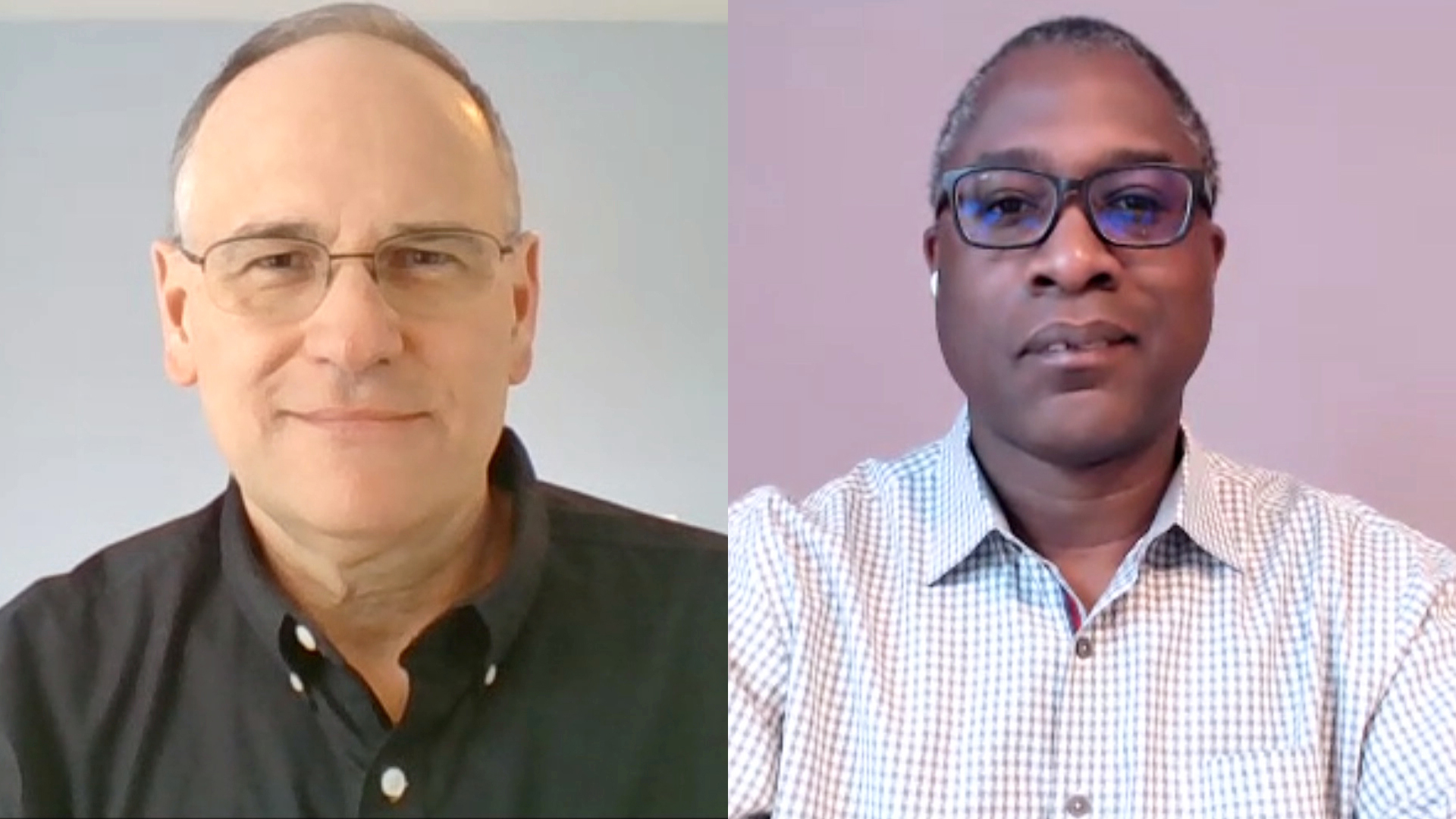 THOUGHT LEADERSHIP
THOUGHT LEADERSHIP
 THOUGHT LEADERSHIP
THOUGHT LEADERSHIP
 THOUGHT LEADERSHIP
THOUGHT LEADERSHIP
Technology companies with millions or billions in profits might donate to environmental sustainability programs or funds. If they’re keen to be doers, not just donors, they might also develop technology that changes real-world processes to negate adverse environmental impacts.
The latter is the most forward-looking type of tech-for-good initiative in the area of sustainability, according to Wayne Balta (pictured, left), vice president of corporate environmental affairs and product safety at IBM Corp. The drives to control or prevent pollution through extraneous means dominated for several decades. But they’ve given way to a new effort that strives to fundamentally transform industrial or business processes, according to Balta.
“Thanks to technology and data and things like blockchain and AI, we all have the opportunity to move into this era of innovation, which differs from control and which differs from traditional prevention: innovations about changing the way you get the same thing done,” he said.
Fortunately, these same technologies that make processes more sustainable can also improve them from a pure business standpoint.
Balta and Kareem Yusuf (pictured, right), general manager of AI applications and blockchain at IBM, spoke with John Furrier, host of theCUBE, SiliconANGLE Media’s livestreaming studio, during IBM Think. They discussed IBM’s long history of environmental involvement and how IBM customers are using tech like blockchain and AI for sustainability and better business outcomes. (* Disclosure below.)
There are five key areas companies on the path to sustainability should focus on, according to Yusuf. They are: a sustainability strategy; climate risk management; electrification, energy and emissions management; resilient infrastructure and operations; and sustainable supply chain.
“They all come together to connect with our clients’ business operations in the context of AI, blockchain and the key business operations we can support to begin to address specific use cases in the context of those needs,” he said.
Blockchain serves as a shared ledger in supply-chain use cases. IBM Blockchain powers the Responsible Sourcing Blockchain Network that enables users to understand how materials are sourced and how they move through the network. This is used in battery manufacturing and mining, for example. IBM customer Norwegian infrastructure provider Atia also uses the network to track, trace and prove the provenance of seafood products, like shrimp.
“We’re leveraging AI to begin to quickly assess, based upon the data inputs, the actual state of inventory, how to connect dots across multiple suppliers and as you onboard them and offboard them off the network,” Yusuf said.
AI is also helping users in civil infrastructure plan and execute projects of massive scale more efficiently. One large IBM customer uses its Maximo Mobile platform for technicians for more sustainable maintenance and inspections of bridges.
“Think about how much they have to invest in the stopping of the traffic, the scaffolding. We have been leveraging AI to do things like visual inspection — actually fly drones, take pictures, assess those images — to identify cracks and use that to route and prioritize work,” Yusuf stated.
Similar things are occurring with customers focused on vegetation management. They are leveraging AI to analyze satellite imagery and weather data so that work can be optimally prioritized and deployed.
IBM is involved in numerous sustainability initiatives for the long haul. “You have to be persistent with environmental problems. You don’t necessarily solve them overnight,” Balta said.
For now, Yusuf says companies should think about what they can do toward the five key sustainability imperatives. Then, “pick a starting point and tie it to something that matters, that changes how you’re doing something today. That’s really the key as far as we’re concerned,” he concluded.
Watch the complete video interview below, and be sure to check out more of SiliconANGLE’s and theCUBE’s coverage of IBM Think. (* Disclosure: TheCUBE is a paid media partner for IBM Think. Neither IBM, the sponsor for theCUBE’s event coverage, nor other sponsors have editorial control over content on theCUBE or SiliconANGLE.)
Support our mission to keep content open and free by engaging with theCUBE community. Join theCUBE’s Alumni Trust Network, where technology leaders connect, share intelligence and create opportunities.
Founded by tech visionaries John Furrier and Dave Vellante, SiliconANGLE Media has built a dynamic ecosystem of industry-leading digital media brands that reach 15+ million elite tech professionals. Our new proprietary theCUBE AI Video Cloud is breaking ground in audience interaction, leveraging theCUBEai.com neural network to help technology companies make data-driven decisions and stay at the forefront of industry conversations.